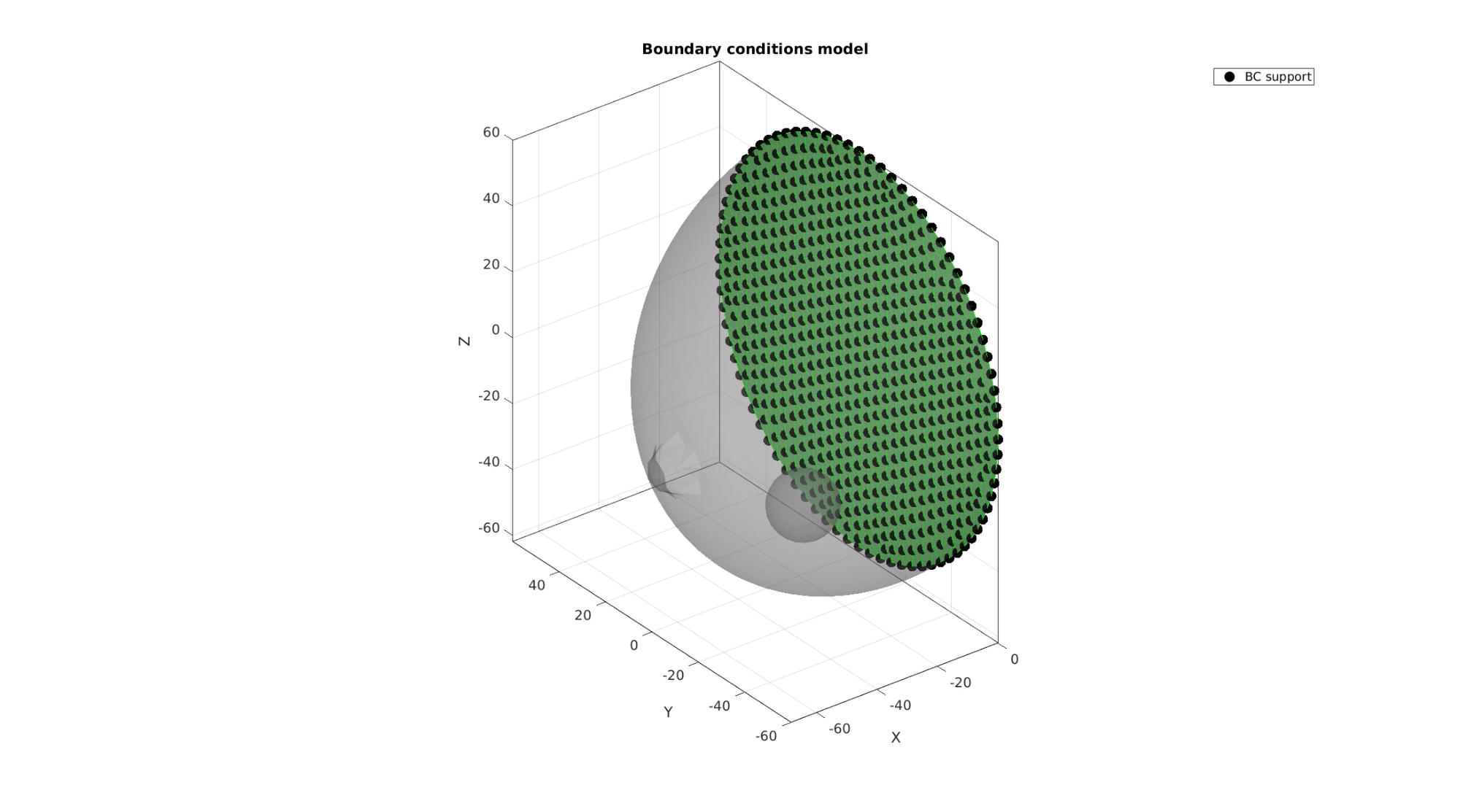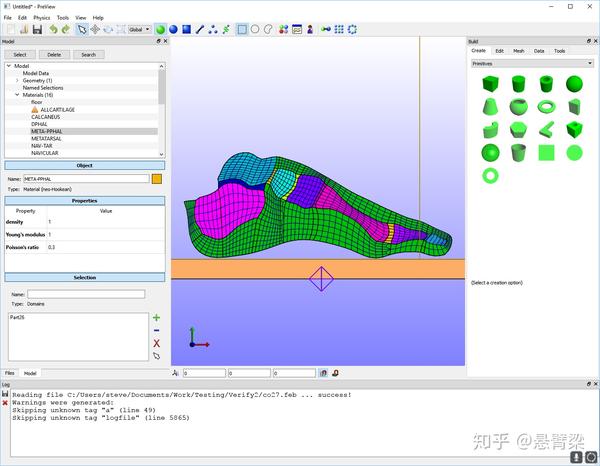
User max/ User min - defines the minimum and maximum range value when using the user range option for range type. Legen Orientation: sets the orientation of the legend bar (horizontal or vertical). Show legend - allows you to toggle the displaying of the legend bar in the Graphics View. Range divisions - changes the number of fringes that PostView will draw on the model. The user can use this option to select a dynamic range (range is updated for each state independently), a static range (range is calculate over all the states) or user range (user defines the minimum and maximum values). Range type - PostView keeps track of the range of the selected data field (that is the minimum and maximum values). 
This will produce a discretized drawing of the data, but will be truer to the actual data since the element data is not interpolated before displaying. However, when this option is turned of, element data will be displayed by using a single color for each element. When displaying element data, PostView will first project the element data to the nodes to produce a smooth rendering of the data.
Nodal values - PostView defines nodal data and element data. 28 Based on our tensile testing experiments (see 'Ground Truth Material Characterization' section), it was shown that the. Color map: defines the color map that PostView will use to color the model. The finite element model was then built to be solved using FEBio. When this option is off, a discrete set of colors is used instead. When gradient smoothing is on, the fringe colors are smoothed to produce a continuous transition between fringes. Gradient smoothing - PostView colors the material by drawing a fringe plot of the selected data field. The color of the model is defined by the data field and the color gradient (see below). Data field - allows the user to select the data field that PostView will use to define the color of the model. The following properties are defined for the color map. The properties will then be listed in the Properties Window below. The Color Map’s properties can be accessed by selecting the item in the Model Viewer entitled Color Map. To learn more, please visit Color Map defines how PostView will calculate the color that is used to display the model in the Graphics View. It can import the FEBio extendible plot file. Upcoming new features will include hyperelastic shell elements, enhanced strain tetrahedral elements, a framework for representing mixtures with any number of charged or uncharged solutes, and dedicated forums for user support and discussion. FEBio Studio 2.1 has been released! This new version contains a lot of bug fixes, but also quite a few new capabilities. Postview is a finite element post-processor that is designed to visualize and analyze results from an FE analysis. Our goal is for FEBio to be the first and best choice for finite element analysis in solid biomechanics. 
#FEBIO POSTVIEW ELEMENT ID SOFTWARE#
The FEBio software downloads and knowledgebase can be found here. This will allow you to stay up to date on recent activity on the forum. You can subscribe to forums by pressing the "Subscribe" button at the top of the forum. Moderators are here to assist with explaining novel features, addressing bug reports and reviewing feature requests, but the effectiveness of the forum depends critically on the participation of experienced users who can assist novices or share ideas and models that explore challenging problems.

A broad level of participation is encouraged, to create a vibrant community that helps improve the quality and usefulness of these open-source/free software products. Forum participants are encouraged to post questions, as well as answer posts from others. This forum serves the community of FEBio and FEBio Studio users and developers.







 0 kommentar(er)
0 kommentar(er)
